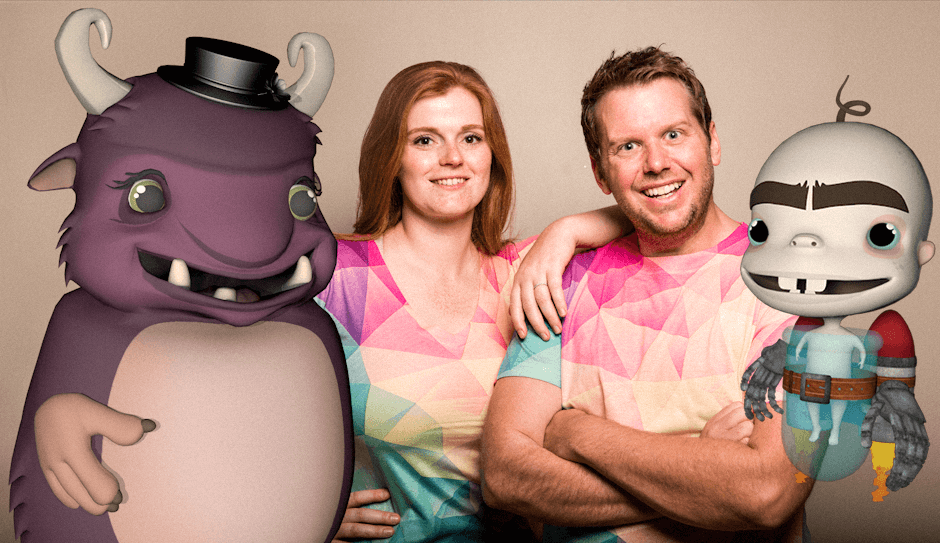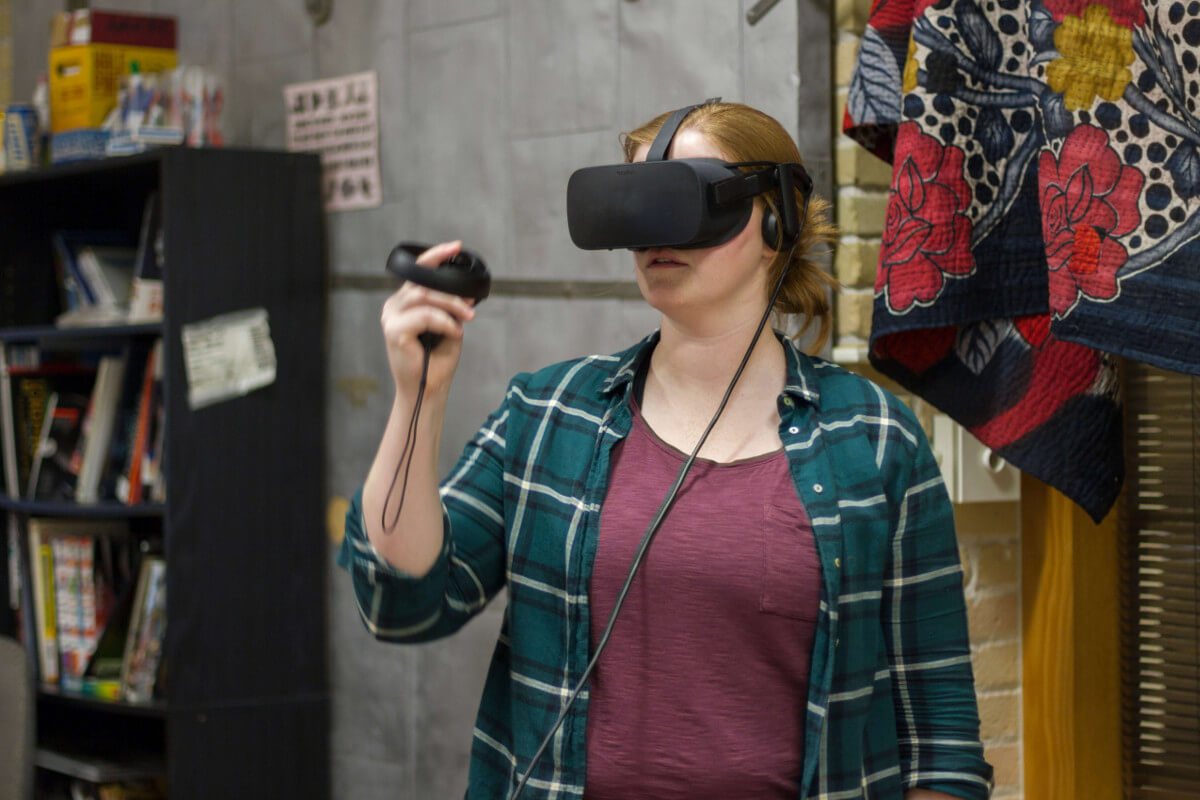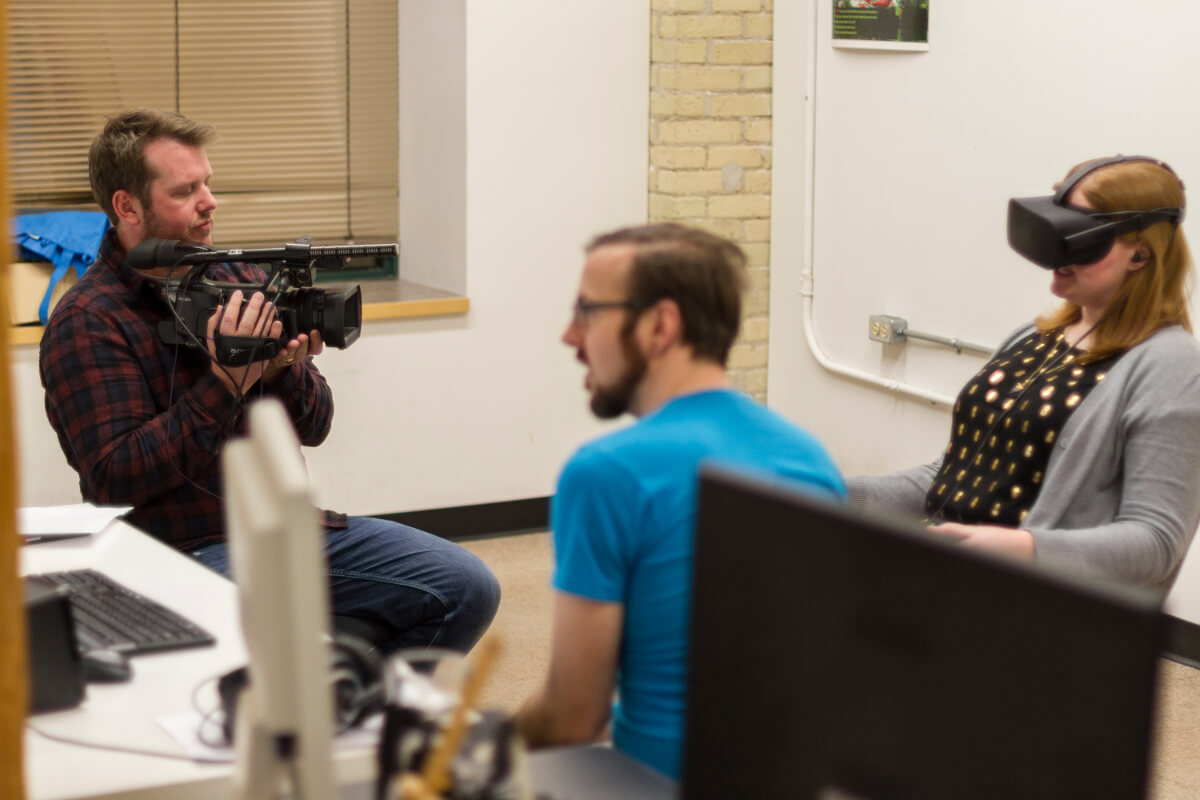- by John Luxford
By Lauren Cochrane, Improviser & Writer - Bucko
Welcome to part 2 of our blog post series on working with live actors in VR (click here to read part 1). This part is about working as an actor in VR, and is a guest post courtesy of our friends at Bucko (aka Genefur and 2B from Super Secret Science Island).

Improv is and always will be about listening. Connecting to your scene partner requires communication both verbally and physically. In VR improv, the same is true, but you will need to listen in a whole new way.
You won’t have the same physical connection as you would in a live theatre setting, so it’s imperative that you take your time and speak and move with intention. It’s actually quite a gift for an improvisor to have the opportunity to play in a format that slows you down and makes you come at a scene from a completely new perspective.
Yes, you will absolutely react to and communicate with the character’s movements (both your own, and your scene partner) but the movements themselves are different. For example: If I am in regular live scene, and I put my hand to my ear to listen to something in the distance, that’s a pretty simple gesture that I can do to communicate an offer and I know my scene partner will follow along. In VR, my character’s body and limitations are different than my own.
Same scenario as above: Genefur’s ear is about half a foot away from my head because the character’s head is wider than mine. So I, as the actor, have to think about how to move my body and puppet Genefur to put her hand to her ear, to communicate the same offer of listening to something in the distance.
This adds a few extra seconds to my offer. Both scene partners have to be aware of this added time. If you are just talking and flailing around you will miss things and the audience will won’t be able to immerse themselves in the world. So, it takes a little bit to get used to the timing and new reaction process. Practice and play.

It’s important to be aware of your virtual surroundings and space, so you don’t bump into things you can’t feel. Using the monitors inside the VR scene is really important. You will want to get familiar with the environments and props to know where they end and you begin.
Yes, it can be funny to use the world and hide inside it (like when Genefur hid inside the fridge to scare 2B) but it can take away the reality if you walk through the table or each other when you’re not supposed to be able to - just like in live improv - if I set up the scene and indicated that “this is where the grand piano is, it’s big and beautiful and right there” and then I walk through it, it dispels the reality I worked so hard to create. Same goes with VR. It will take the viewer out of the magic and then the “oops” becomes the focus, rather than the scene.
Trust is still conveyed between virtual avatars, even though you’re acting against the other person's character and not their real self. If you are playing with someone who you are used to playing with, it will make the VR scene process MUCH easier. It’s a little funny to get used to, but knowing that the person you are playing with is right there with you in the scene, while also at the same time, being in a room down the hall-it’s kind of new sensation.
Your brain will honestly believe you can reach out and physically touch your partner. Aaron and I usually high five to connect and ground ourselves together in live scenes. And without talking about it, we naturally did that between takes in VR scenes.
When you come out of VR and realize this person your brain swore was beside you isn’t, it’s a very cool/weird/eerie/amazing feeling. It’s a feeling that is probably easiest to process, if you are super comfortable with your scene partner. It’s a new level of trust. As an improvisor that is quite the experience!

Lack of an audience can take a little bit of adjustment. Live improv is pretty clear with it’s audience communication. You, as the improvisor will know if the audience is digging what you are putting out by their laughter, clapping - even just the vibe of the room. You can feel and see if the audience is enjoying themselves and connecting.
In VR, you won’t have that, which can take a little bit of getting used to. You have to trust the same instincts and timing like you would in a live theatre, but be okay without the instant payoff of a room laughing and giggling with you. You’re a seasoned improviser. You got this. Trust it’s working, and you can go back and try again if it’s not.
In live improv, you will constantly be told “Cheat to the audience!” They need to be able to see what you are doing, what you are holding (mimed or real) and what you are trying to do with it. It’s the absolute same in VR improv.
The cool thing about props in the VR scenes is that they are used to add even more to the world than you could ever have in live scenes. (Ahem: Super Science Pencil-YES!) So if you use or make something, be sure to check the monitors to see that it’s purpose is being communicated.
That if you drew a sword and are now using it, make sure the camera’s and your scene partner can see it clearly. Otherwise, you will have a break in communication. If that happens, scroll up and re-read this again. It’s all there my friends. :)